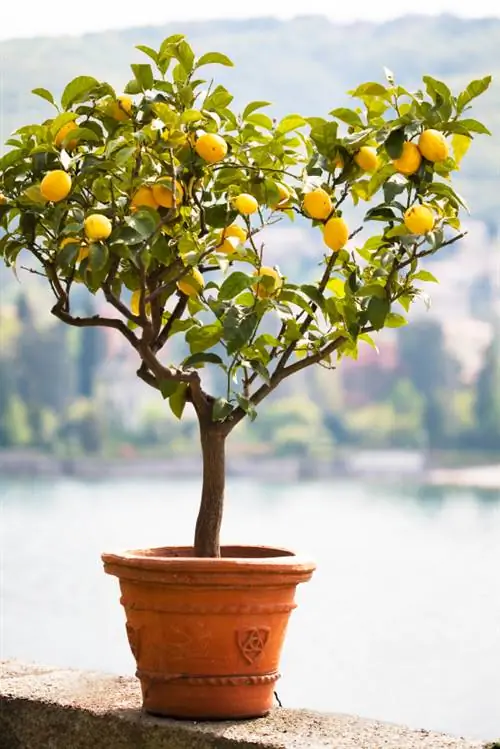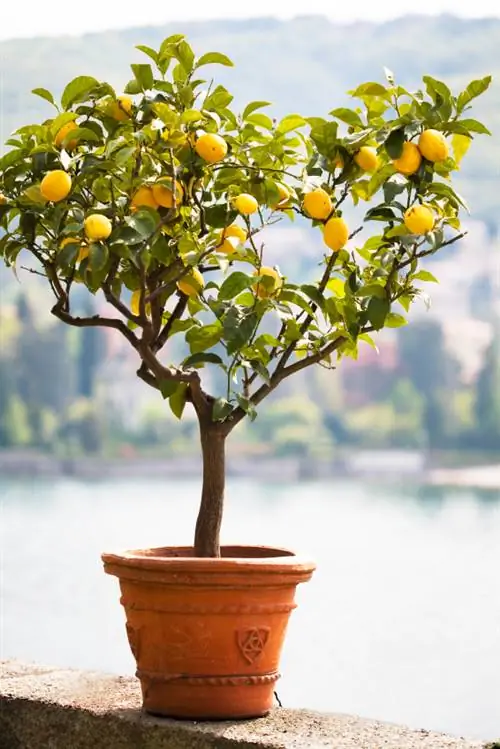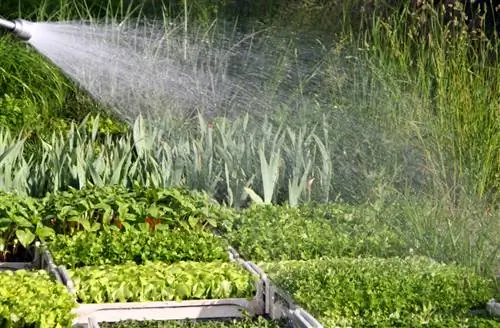- Author admin [email protected].
- Public 2023-12-16 16:46.
- Last modified 2025-06-01 06:02.
In Germany, too, citrus plants such as the lemon tree are very popular in winter gardens, on terraces or in rooms. The beautiful, lushly growing plants with lush green leaves bloom almost all year round and, if cared for well, even bear juicy fruit. However, lemon trees from the subtropical climate zone are best grown in pots.

Which pot is suitable for a lemon tree?
For a lemon tree in a pot, plastic or tightly fired clay pots with good drainage are suitable. It is important to have water drainage at the bottom, waterproof side walls and slightly acidic soil. Regular repotting promotes the growth and he alth of the plant.
Which pot is suitable?
Only containers that have good drainage at the bottom and waterproof side walls are suitable for growing lemon trees in containers. It is best to choose plastic pots as they are still easy to transport even as the root ball grows larger. Densely fired clay pots are also well suited - especially for smaller sizes - as they are less susceptible to wind. For outdoor locations in summer, you should not use a saucer so that excess rain and irrigation water can drain away unhindered. This way you prevent rotting roots.
Why are terracotta vessels not very suitable?
Terracotta pots look very pretty and actually go perfectly with Mediterranean plants. However, the evaporation cold that occurs with terracotta pots fired at low temperatures can slow down root activity and thus the growth of the plant. Evaporative cooling occurs in vessels where water can transpire through the vessel wall.
Ensure good drainage in the pot
Drainage in the pot is also very important for lemon trees, which on the one hand drains excess water and on the other hand prevents waterlogging. To achieve this goal, you should pack small pebbles as the bottom layer in the bucket. In addition, citrus soil or self-mixed substrate contains a proportion of expanded clay, which ensures the appropriate permeability of the soil. In addition, good potted plant soil should not tend to become muddy, but should also not be too light (keyword: susceptibility to wind). Ideal lemon tree soil has a pH value between 5 and 6, so it is slightly acidic.
Repot lemon trees regularly
So that your beautiful plants stay he althy and can grow optimally, they should be planted regularly - but not too often! - be repotted. Because of the very small amount of substrate (which are quickly rooted) and because of their still strong growth, young plants should be repotted annually; older plants should be repotted every two to three years, depending on their ratio of crown volume to pot size. The root ball is usually about as wide as the tree crown. New pots should be about a third larger than the root ball.
Tips & Tricks
To make repotting a large lemon tree easier, you can simply lay it on its side along with the pot and then remove the bucket.






